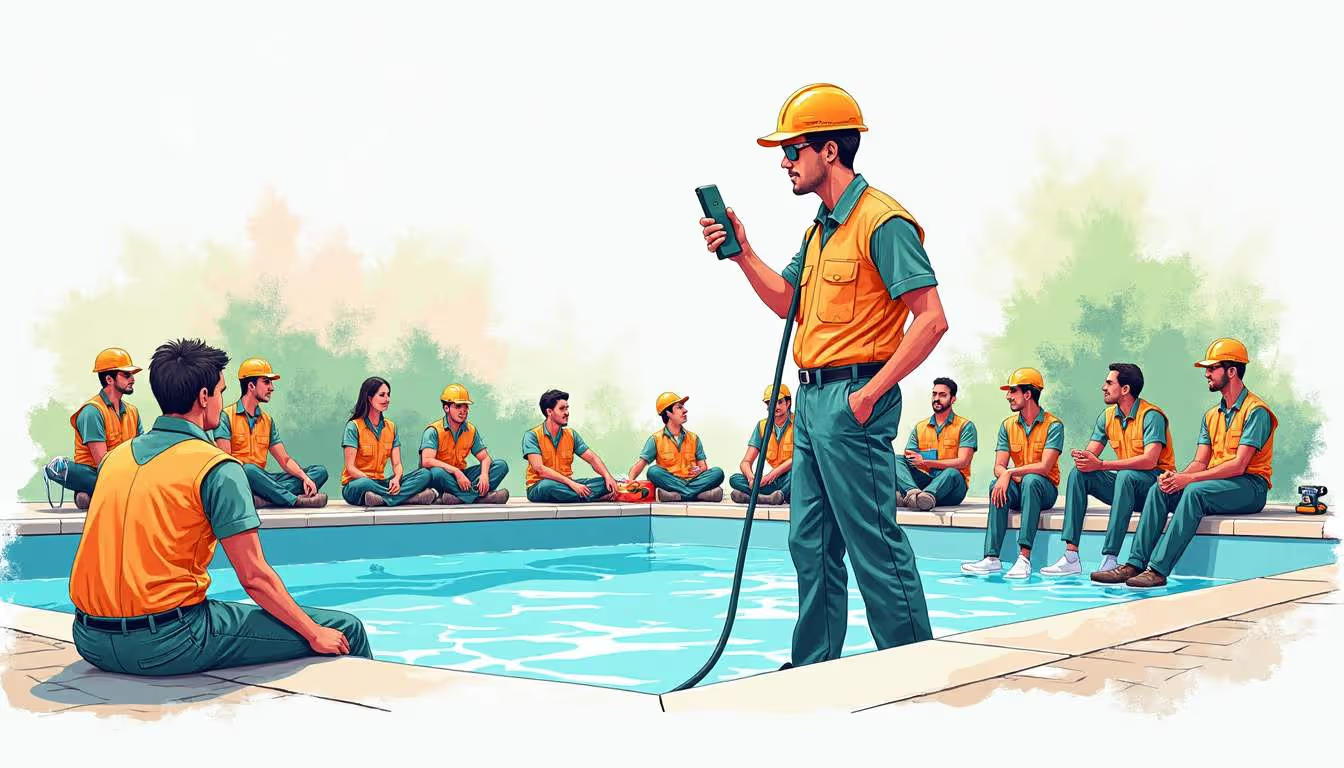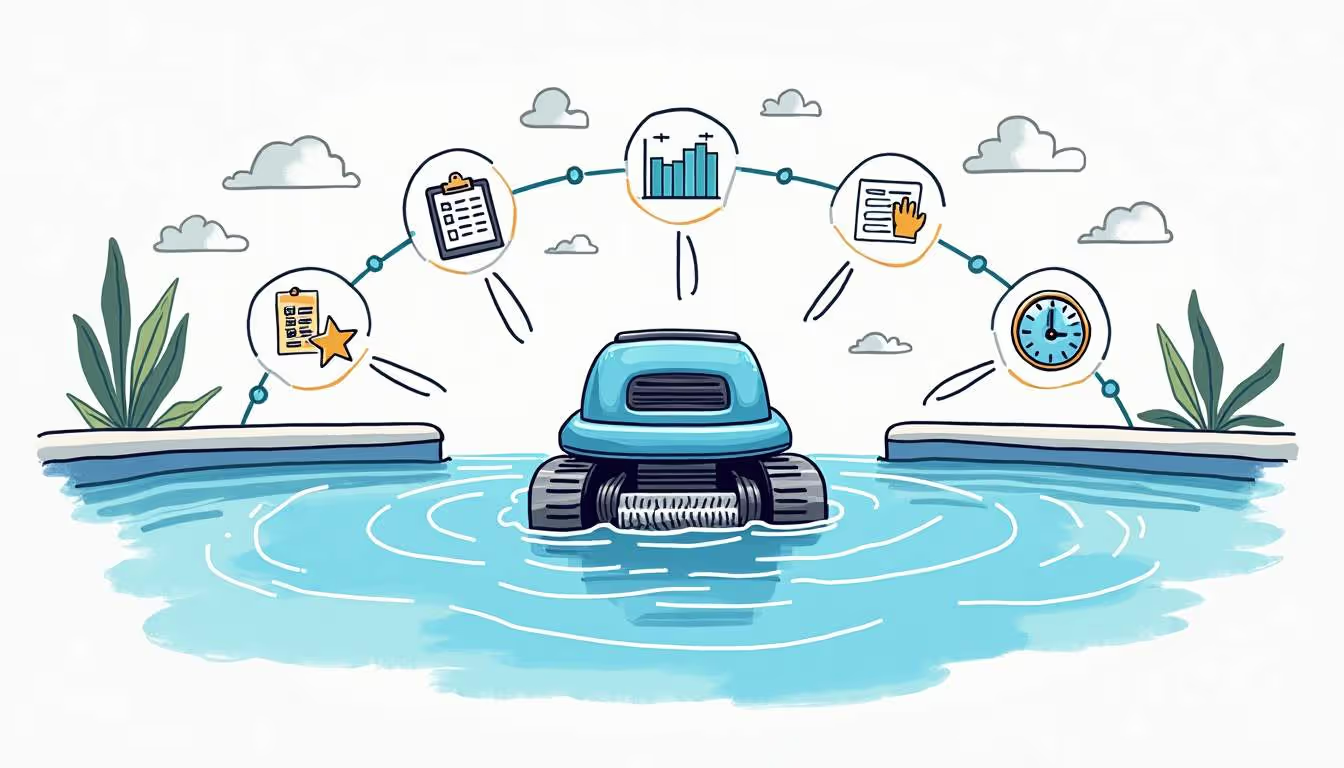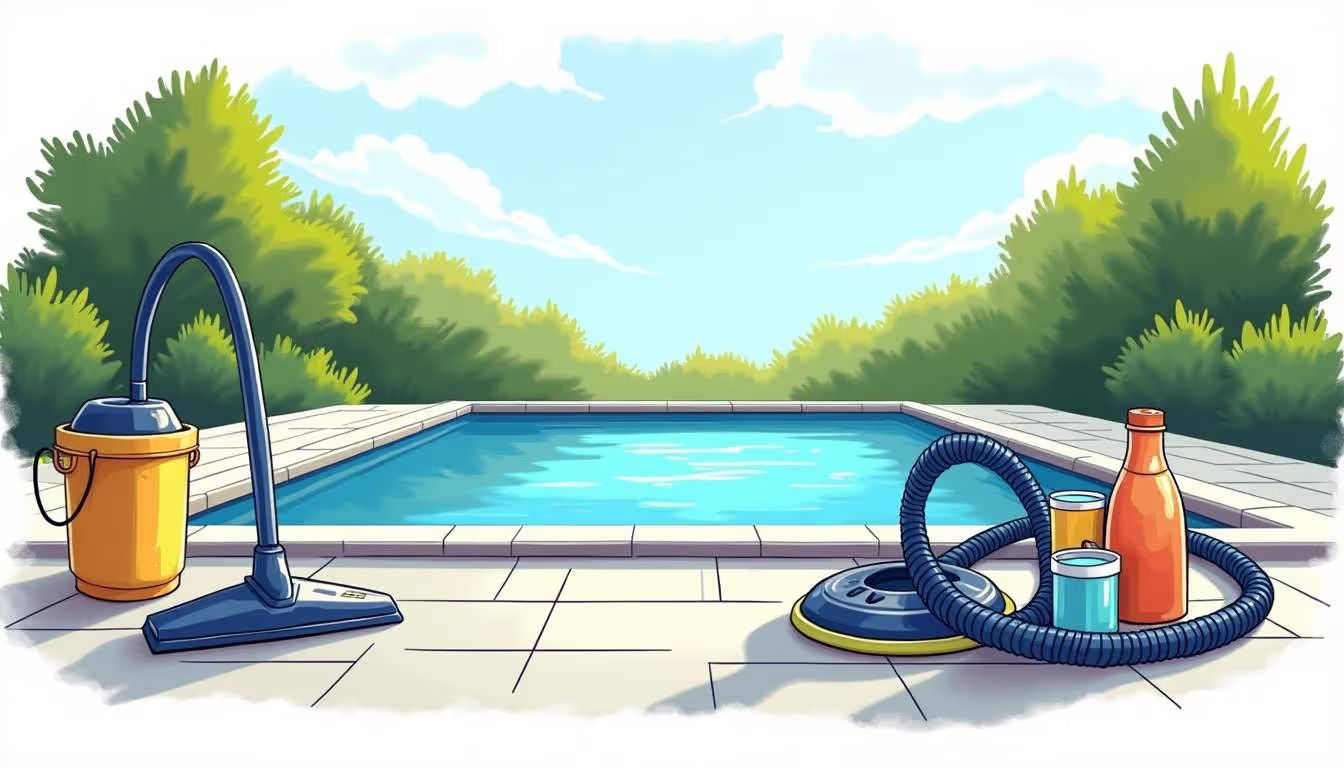How to Optimize Pool Service Technician Recruiting for Your Business
The pool service industry is booming. The Pool & Hot Tub Alliance reports more than 10.4 million residential pools in the United States and an annual growth rate of 3–5 percent. Yet while demand soars, many service companies struggle to find and keep qualified technicians. A 2023 survey by the Association of Pool & Spa Professionals revealed that 61 percent of pool service managers list “persistent technician shortages” as their number-one operational pain point. Winning the talent war therefore isn’t a side project—it is the fulcrum on which profitability, customer satisfaction, and brand reputation all pivot. The following guide distills proven tactics, fresh data, and real-world examples that will help any pool service firm build a reliable, future-proof technician pipeline.
The Current State of Pool Service Recruiting
Service businesses that maintain, clean, and repair pools now compete not only with regional rivals, but also with HVAC, plumbing, and electrical contractors for the same mechanically inclined labor pool. According to the U.S. Bureau of Labor Statistics, employment for “installation, maintenance, and repair” occupations will grow 6 percent through 2032—adding close to 430,000 new jobs. Because formal pool-specific trade programs remain scarce, most recruits learn through on-the-job mentoring, which makes poaching experienced techs from competitors enticing and all the more commonplace.

This zero-sum dynamic drives wages upward. The average hourly rate for a certified pool operator climbed from $18.75 in 2020 to $23.10 in 2023, a 23 percent jump. Spiraling labor costs put downward pressure on margins, but the true drain is an unfilled technician seat that can cost midsize pool service businesses between $300 and $450 in lost revenue every single day.
Why the Talent Gap Exists
Two structural factors lie at the root of the shortage. First, Gen Z generally favors knowledge-based careers over skilled trades, a trend the National Association of Manufacturers pegs at a 28 percent decline in trade school enrollment over the last decade. Second, veteran Baby Boomer technicians are retiring faster than replacements can be trained. That exit velocity accelerates the skills deficit, leaving owners scrambling to cover increasingly complex automation systems, salt-water chemistry, and variable-speed pump repairs.
The Cost of a Vacant Technician Position
Beyond lost job tickets, vacancy carries less visible costs: overtime for remaining staff, truck idling fees, and higher customer churn. Owners who track Net Promoter Score routinely see a 10- to 15-point drop when technician shortages stretch appointment windows past 48 hours. In other words, recruiting is not an HR activity—it is a revenue imperative.
Crafting an Appealing Employer Brand
Technicians don’t just choose a paycheck; they choose a narrative. An employer brand articulates purpose, career trajectory, and the day-to-day experience a candidate can expect. When Raleigh-based Crystal Clear Pools audited its applicant touchpoints, it replaced generic stock photos with authentic team imagery and added technician spotlights to its website. Applications rose 37 percent in the following quarter.
Clarity around mission is equally potent. Stating “We keep families safe in their backyard oasis” resonates more deeply than “We clean pools.” A clear mission invites recruits to envision their work’s impact and fosters emotional attachment that can trump marginal wage gaps.
Finally, transparency matters. Glassdoor’s 2024 Talent Attraction study shows that 79 percent of job seekers read at least six reviews before applying. Proactively responding to feedback—both glowing and critical—demonstrates maturity and positions the company as a learning organization.
Showcasing Career Pathways
Spell out advancement ladders in black and white. A three-tier structure—Apprentice, Certified Technician, Senior Technician—paired with estimated timelines and pay ranges turns abstract promises into concrete incentives and reduces early turnover by up to 12 percent, according to research published in the Journal of Service Management.
Leveraging Social Proof and Reviews
Ask satisfied employees to leave candid reviews on Google, Indeed, and Facebook. Short testimonials—“I earned my Certified Pool Operator credential within six months”—carry more weight than polished corporate videos. Encourage techs to share day-in-the-life snippets on Instagram Stories. Authentic, unpolished moments outperform scripted content by 2.3× in click-through tests run by SmartRecruiters in 2023.
Customer reviews amplify the employer brand indirectly. Prospective hires scan consumer feedback to gauge how fairly technicians are treated when things go wrong. Quick, empathetic owner replies signal a culture of respect.
Writing Job Ads That Actually Convert
Copywriting is still the linchpin of lead generation—whether for customers or candidates. Ads stuffed with clichés such as “fast-paced environment” or “competitive compensation” blend into the background. High-performing postings deploy specific, sensory language: “You will balance water chemistry in luxury resort pools overlooking Biscayne Bay” paints a scene. So does “Our senior techs mentor you on heat-pump troubleshooting until you can fix a no-heat call solo.”
Structure matters too. LinkedIn heat-map analytics show that listings with bullet points scannable in 11 seconds or less secure 30 percent more apply-clicks. Open with the purpose, list three to five core outcomes, detail benefits, and close with a call to action that feels active (“Schedule a five-minute chat”) rather than passive (“Submit your résumé”).
Focus on Outcomes, Not Just Duties
Outcomes answer the candidate’s unspoken question: “What impact will I have?” Instead of “Maintain pools,” write “Guarantee crystal-clear water that keeps clients swimming safely all season.” The shift from task to impact elevates the role’s perceived value.
Speak the Language of Technicians
Use trade-specific terminology judiciously—salt-cell regeneration, ORP readings, variable-frequency drive calibration—to signal credibility, but avoid jargon that obscures meaning. Testing job ad variations with and without technical acronyms on ZipRecruiter helped Clearwater Maintenance in Austin lift completed applications by 19 percent.
Streamlining the Application Funnel
Every unnecessary form field chops off prospects. Appcast’s 2024 Recruitment Benchmark Report finds that completion rates plummet after the 12-question mark. Replace résumé uploads with “quick apply” workflows that capture name, phone, certifications, and driver’s-license status. The résumé can follow once interest is confirmed.
Speed is equally crucial. A CareerPlug study of skilled-trade hires shows a 47-percent drop-off if candidates wait more than 24 hours for a response. Automating acknowledgment emails and text messages reaffirms interest and locks in momentum.
Mobile-First Applications
Roughly 73 percent of applicants in field services begin their search on a smartphone. Design forms with big tap targets and autofill enabled. Eliminate mandatory account creation, and let candidates photograph certificates instead of attaching PDFs that live on a desktop they don’t own.
Automated Screening and Scheduling
Modern applicant-tracking systems can weed out unqualified leads by requiring simple yes/no answers: “Do you hold a valid pool-service license in this state?” Candidates who say yes instantly see calendar slots and book an interview. When Los Angeles-based Pacific Blue Pools implemented auto-scheduling, time-to-hire fell from 18 days to just 9.
Integrations with texting platforms keep communication human. A friendly “Hey Marcus, looking forward to our chat Tuesday at 2 p.m.” reduces no-shows by 32 percent on average, according to Mitel’s 2023 Communications in Hiring report.
Interviewing for Culture and Capability
Interviews must balance soft-skill vetting with proof of technical competence. A Gallup meta-analysis reveals that poor culture fit accounts for 46 percent of first-year attrition across service trades. Ignoring personality signals is therefore an expensive gamble.

Conversely, over-indexing on charm can saddle the company with a likable but underperforming tech. A structured process that pairs behavioral questions with hands-on tasks delivers a 24 percent higher employee Net Promoter Score, according to HireVue analytics.
Behavioral Questions That Reveal Fit
Ask situational prompts tied to real scenarios: “Describe a time you discovered a hidden leak that would have cost the homeowner thousands.” Listen for initiative, problem-solving, and communication—competencies strongly correlated with customer retention in ServiceTitan’s 2022 Field Performance study.
Practical Skill Assessments
On-site tests need not be elaborate. Provide a pump-motor assembly with a known fault, a multimeter, and 20 minutes on the clock. Observers score for PPE use, diagnostic flow, and final fix. This exercise, piloted by Blue Ribbon Pools in Tampa, cut early-term failures by 17 percent because it exposed resume embellishments before a hire was made.
Virtual assessments—like chemical-balancing simulations—can complement on-site tests for remote applicants. Pair results with video interviews to create a holistic view of the candidate’s readiness.
Retention Starts on Day One
Recruiting cannot be separated from retention; every departure restarts the cost cycle. The Society for Human Resource Management puts the price of replacing a frontline employee at 50–60 percent of their annual salary. A well-orchestrated first month therefore safeguards the initial recruiting investment.
High-performing companies script a 30-60-90 plan that outlines weekly objectives, ride-along schedules, and certification milestones. New techs who perceive structured onboarding reach full productivity 34 percent faster, based on research published in Harvard Business Review.
Structured Onboarding Programs
Provide a checklist that covers tools issuance, safety training, and route management in the company’s software platform. Pair rookies with “onboarding buddies” to answer day-to-day questions—an approach that slashes early frustration and fosters belonging.
Continuous Training and Upskilling
Technology evolves quickly: variable-speed pumps, IoT water-quality sensors, AI-driven scheduling. Offer quarterly lunch-and-learns, vendor-sponsored workshops, and tuition reimbursement for advanced certifications. The National Swimming Pool Foundation notes that certified pool operators earn 11 percent more and stick around 18 percent longer than uncertified counterparts.
Using Data to Refine Your Recruiting Engine
Marketing wisdom applies: what gets measured improves. Establish a dashboard inside your service-management software to track each funnel stage—impressions, clicks, applications, interviews, offers, and accepted hires. Layer in cost data to calculate cost per qualified applicant and cost per hire.
Monthly retros foster agility. When Elite AquaCare in Denver noticed a 42 percent drop in applications from Indeed, they A/B-tested new headlines that emphasized four-day workweeks. Click-through rates rebounded in two weeks, and hires followed.
Key Metrics to Track
Time-to-hire, quality-of-hire (90-day retention), offer-acceptance rate, and candidate Net Promoter Score form the backbone. Add voluntary turnover, training completion, and first-year customer satisfaction for a complete lifecycle view.
Running Small Experiments
Rather than overhaul everything, tweak one variable at a time—switch to video job ads, raise signing bonuses by $500, or extend weekend call coverage. Collect data for four weeks, analyze, keep what works, discard what doesn’t. Continuous iteration is the hallmark of market leaders.
Conclusion: Building a Sustainable Talent Pipeline
Pool service success hinges on more than sparkling water and balanced chemistry; it rides on the backs of motivated, well-trained technicians who feel valued. By framing recruiting as a strategic, data-driven process—from employer branding and compelling job ads to streamlined applications, rigorous interviews, and robust onboarding—service companies can outmaneuver the labor crunch and accelerate growth.

The playbook outlined above is not theory. It borrows from the daily practices of high-performing pool service firms across the country. Adopt, adapt, and iterate. When the busy season hits and competitors scramble, your trucks will roll out fully staffed, your customers will stay delighted, and your bottom line will thank you.







